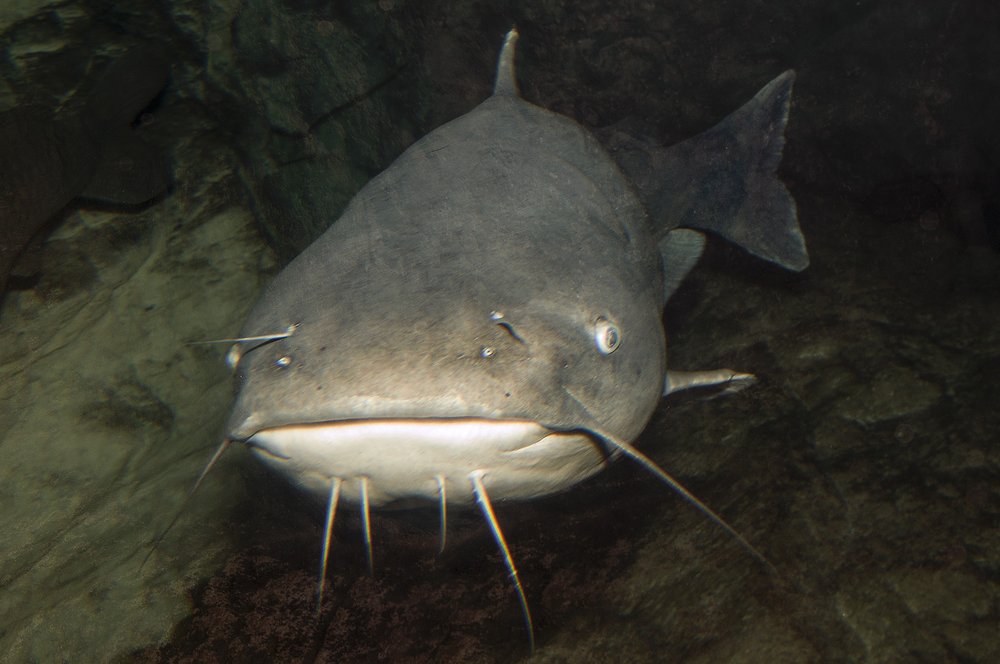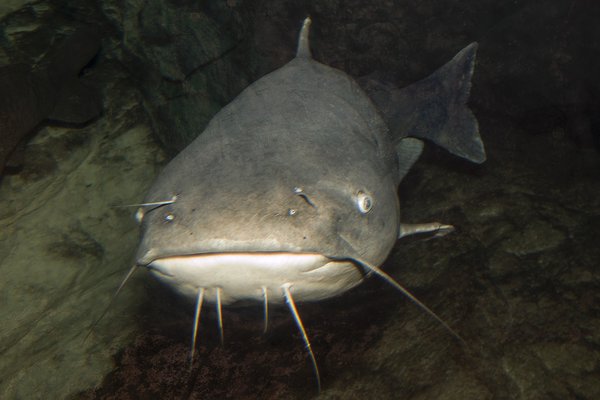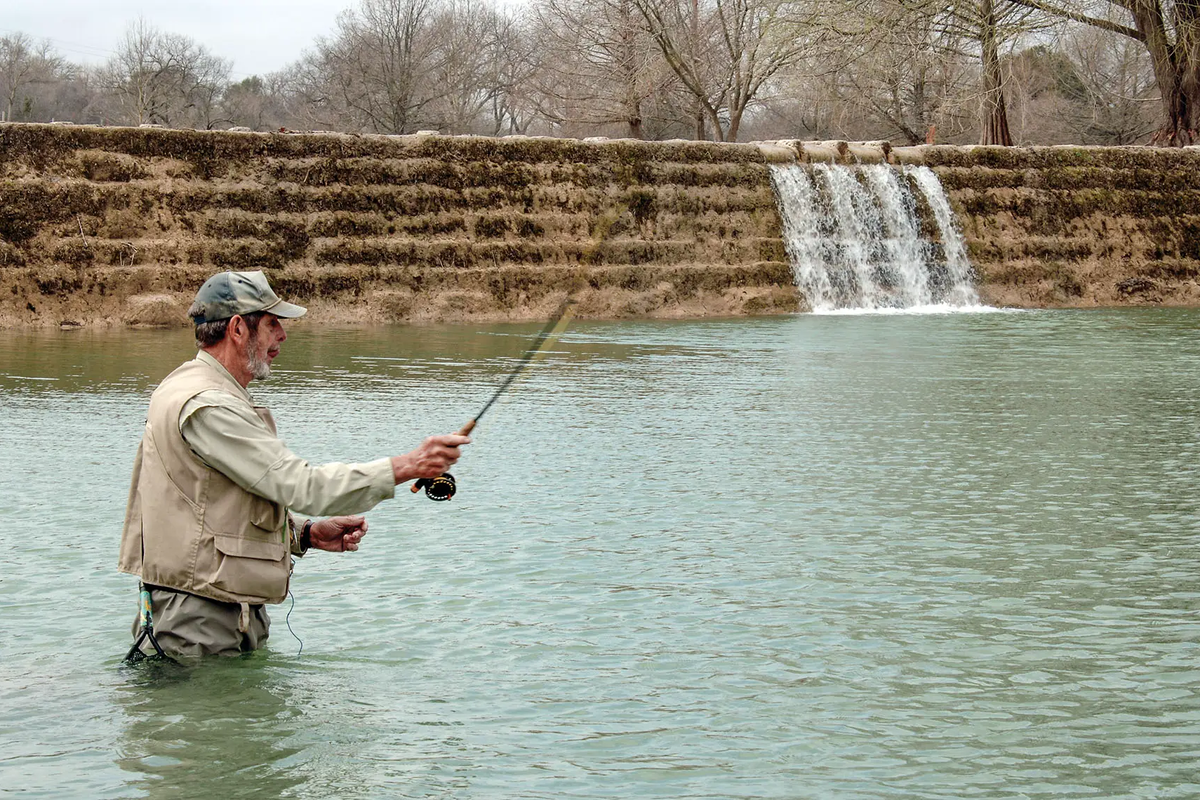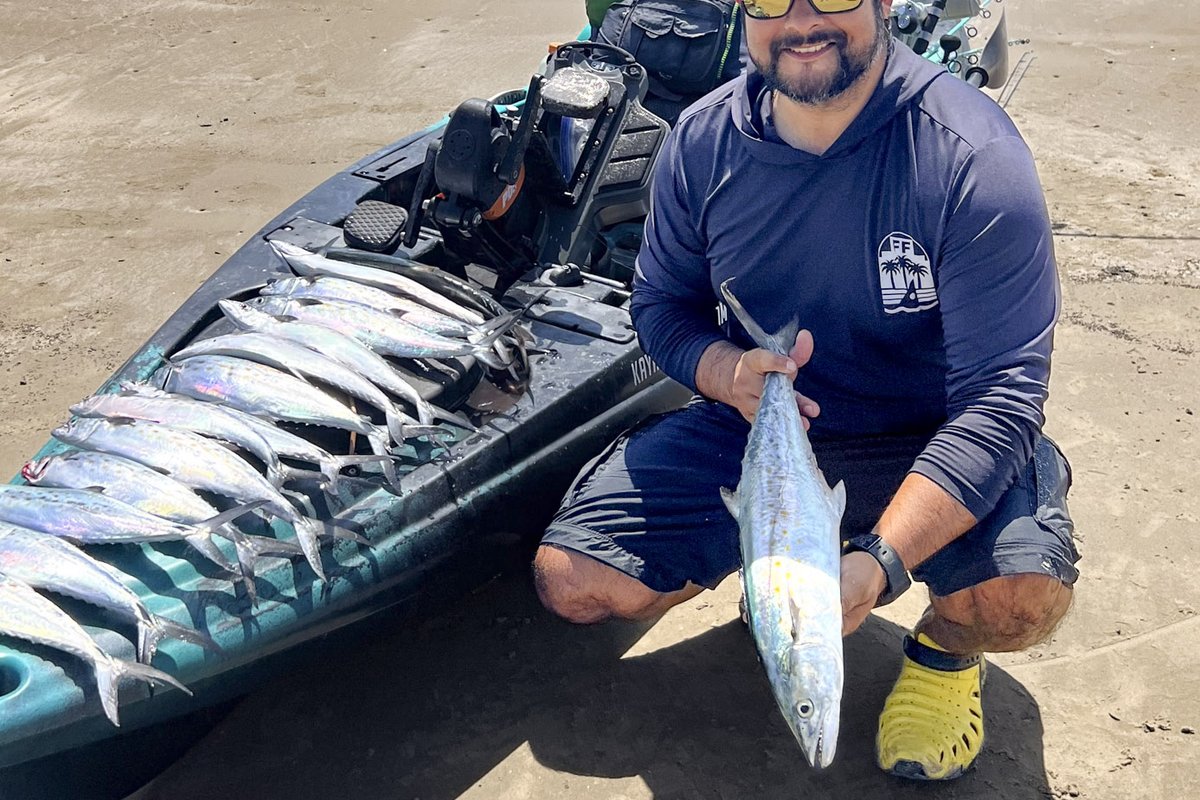Catfish have carved a special place in America's angling culture, drawing countless enthusiasts to rivers and lakes across the country in pursuit of these whiskered bottom-dwellers. They are abundant and are known to be excellent table fare. Who doesn't like fried catfish? They also get massive. Texas' current state record for a blue cat is 121 pounds! The best part is that you can fish for them year-round in Texas.
There are many ways to go about catching catfish. Some anglers bounce off the bottom with a Santee rig. Others anchor up on a catfish hole and use punch bait. Noodling, or hand fishing, for large catfish has increased in popularity over the last 10 years. Then there are juglines.
Juglining is a simple but effective technique for catching catfish. A jugline is a fishing line attached to a float called a “jug,” with five or fewer hooks attached to the line. For the float, many anglers use recycled plastic bottles or pool noodles cut into sections. The ideal float should be visible from a distance and sturdy enough to withstand a fighting catfish. A weight can be added to the end of the line to help it stay in place, or you can let it drift. After setting up the rig, you wait. Some anglers let their rigs sit overnight before retrieving them to harvest a catch. Checking them every hour, however, is a good rule of thumb. Juglines can be bought online or at a local sporting goods store. In the age of YouTube, there are plenty of DIY versions you can find and build yourself.
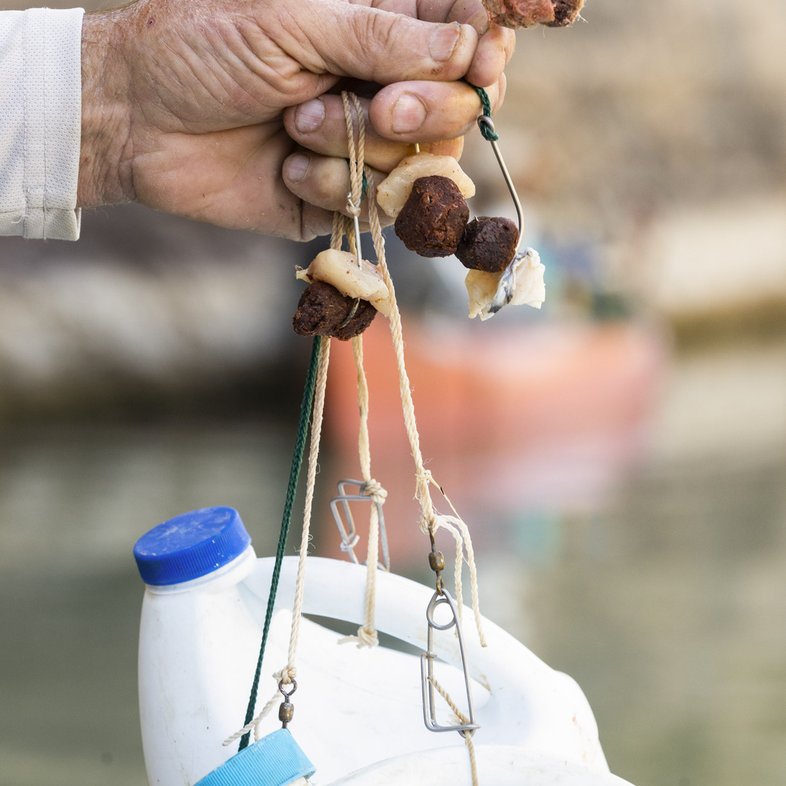
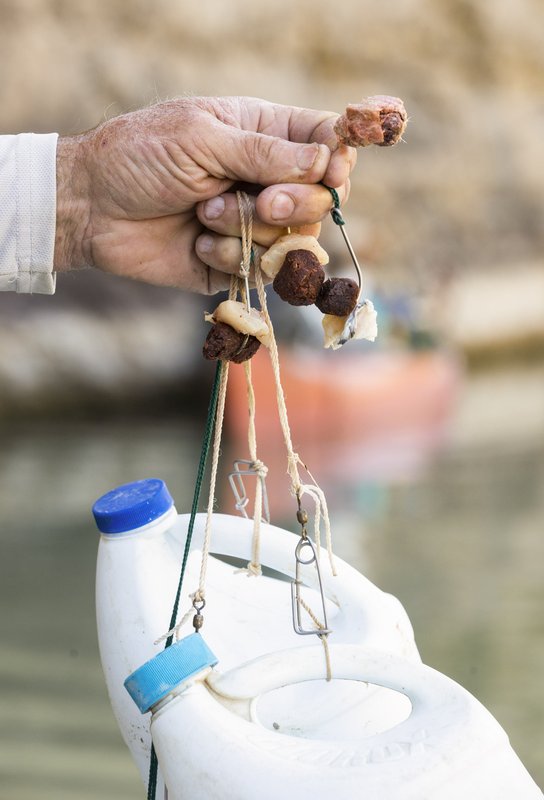
Juglining gear
Erich Schlegel
Juglining gear
Erich Schlegel
There are several advantages to using juglines for catfish. Once they are set, you can fish for other species while they sit in the water. They are also perfect for kayaking. I have mine stored in a milk crate behind my kayak seat.
To set a jugline, prep the line, and bait the hooks. Mark your jugline with a valid gear tag. Once the hooks are baited, drop the line into the water. Use the jug to control your fishing depth. Catfish stay near the bottom most of the time, but it is not uncommon to catch them at all levels in the water column. I have more success if the jug is as straight up from the line as possible. I use a 6-ounce sinker as the weight; enough to stay on the bottom and keep the rig from moving if the wind picks up. I will move the juglines if I haven't caught a fish after checking them twice.
The time of year will determine where you set juglines. During the fall and winter months, catfish follow shad up the rivers and creeks. Depending on the water temperature, they will be in depths between 10 to 15 feet and stay there consistently. I have had the most success setting juglines along the ledges that drop off into the main creek. During the spring they will move out again to the main lake. They prefer shallow water vegetation near dropoffs in about 10 feet of water. During summer they will go deep to beat the heat.
Check Texas Parks and Wildlife regulations for tagging and marking requirements and for a list of water bodies where juglining is prohibited. Juglining is an effective way to target catfish. It's relatively easy and productive and offers a good chance of being rewarded with a catfish meal at the end.
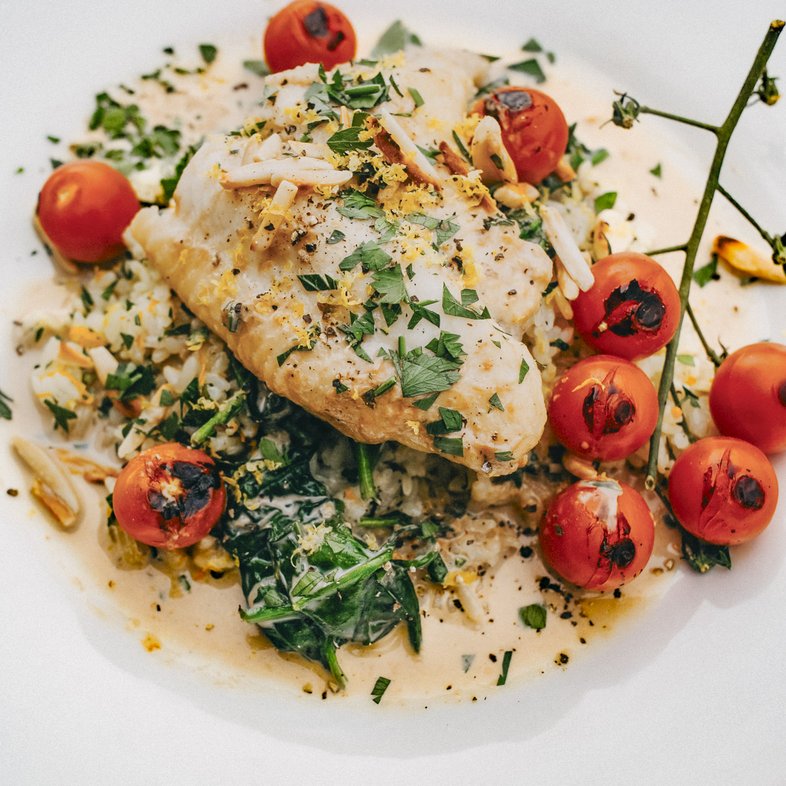
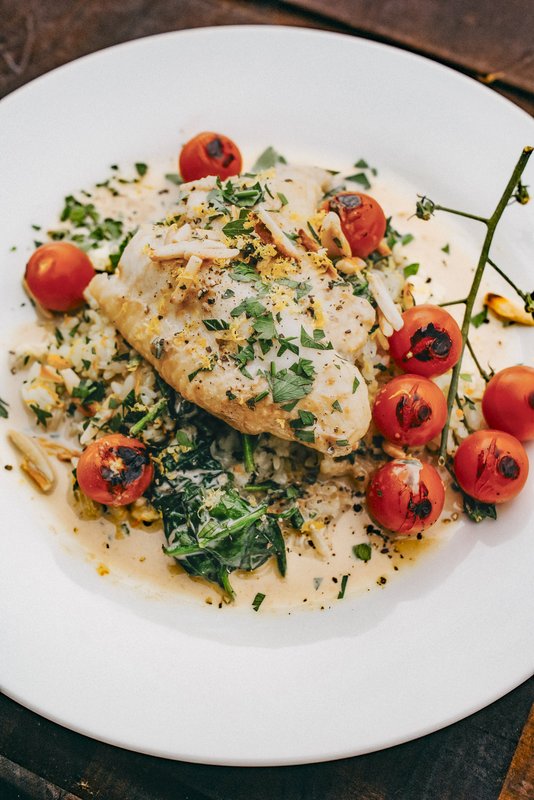
Poached catfish
Ben Lew
Poached catfish
Ben Lew
Earl Grey Milk-Poached Catfish
Recipe by Josh Crumpton
You don't always have to fry your catfish. This sophisticated yet approachable dish pairs delicate catfish with a fragrant cream sauce and wilted spinach. Serve it with blistered tomatoes and bright citrus rice. The components create a beautiful color palette on the plate with complementary flavors throughout. Find the complete recipe at tpwmagazine.com.
Serves: 4
Ingredients
- 4 catfish fillets (about 6 ounces each)
- 2 1/2 cups whole milk
- 1 cup heavy whipping cream
- 2 tablespoons loose Earl Grey tea (or 4 tea bags)
- 1 tablespoon honey
- 1 teaspoon fresh thyme leaves
- Plus more for garnish
- 2 tablespoons butter
- 6 cups fresh spinach, washed
Prepare the Earl Grey Milk Poaching Liquid
- In a deep, wide skillet, combine milk and heavy cream. Heat until steaming but not boiling. Add Earl Grey tea, remove from heat, cover and steep for 7 minutes.
- Strain the infused milk mixture back into the skillet. The milk will have taken on a dark color from the tea.
- Add honey and thyme. Bring to a very gentle simmer over low heat, whisking occasionally to prevent burning.
Poach the Catfish and Wilt Spinach
- Season catfish fillets with salt and pepper.
- Slide the fillets into the barely simmering milk mixture. The liquid should cover about 3/4 of the fish.
- Cover the pan with a lid and poach gently for 5-7 minutes until fish is opaque and flakes easily.
- Carefully remove catfish fillets and place on a foil-lined tray. Cover loosely with foil and keep warm in a low oven (200°F).
- Whisk butter into the poaching liquid until slightly thickened.
- Add spinach to the sauce and gently toss until just wilted, about 1-2 minutes.
To Serve
Spoon citrus rice onto plates, creating a bed for the fish. Arrange wilted spinach on top of the rice., and place a catfish fillet on top of the spinach.
Spoon some of the Earl Grey cream sauce over the fish, and arrange blistered tomatoes around the plate. If desired, sprinkle with toasted almonds, lemon zest, fresh parsley and thyme leaves.
A former fine-dining professional turned outdoor pursuit expert, Josh Crumpton bridges sophisticated culinary technique with wild foods and conservation. Follow his adventures @texas_josh.
